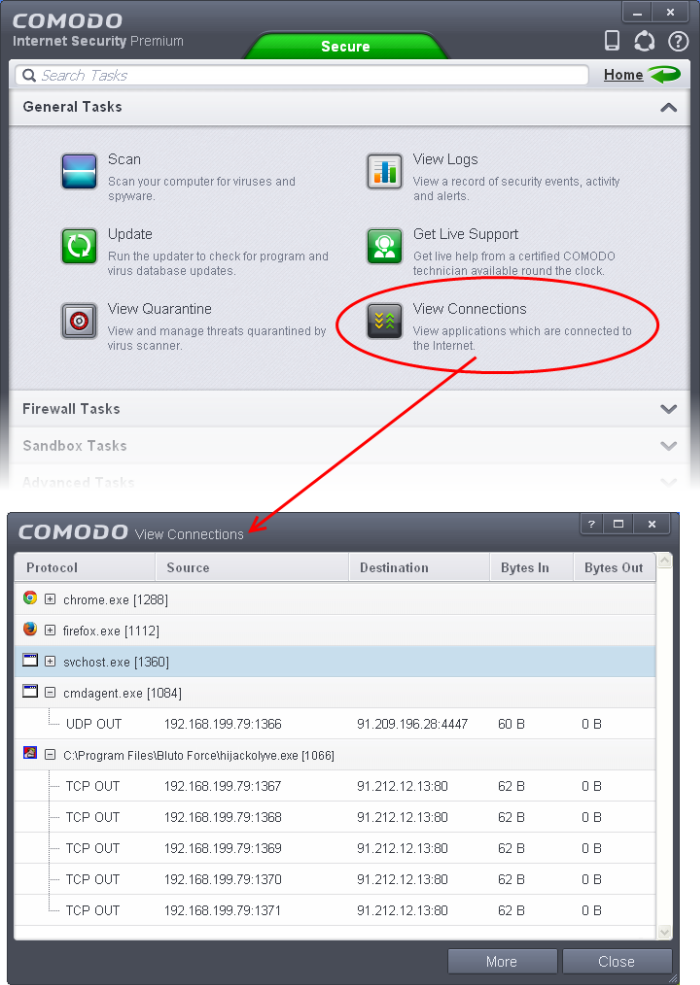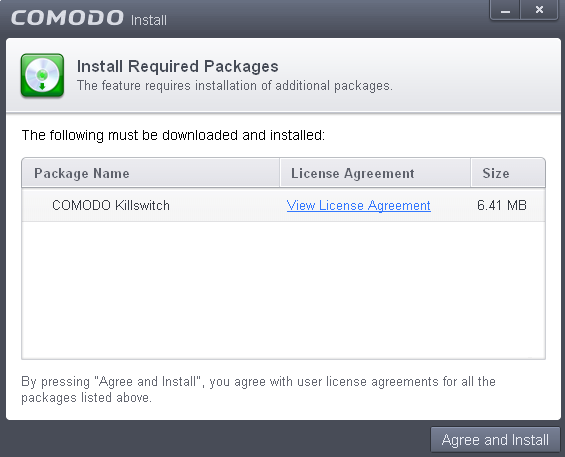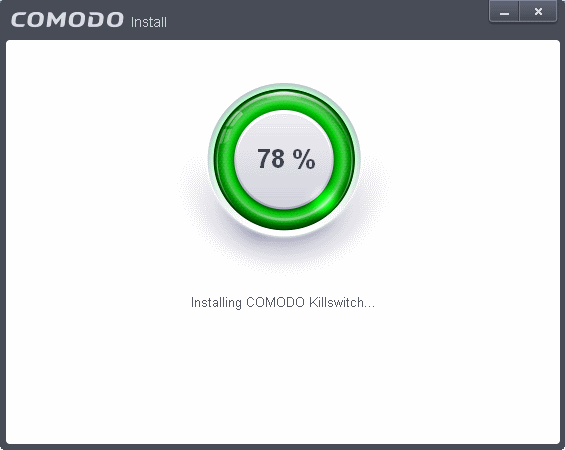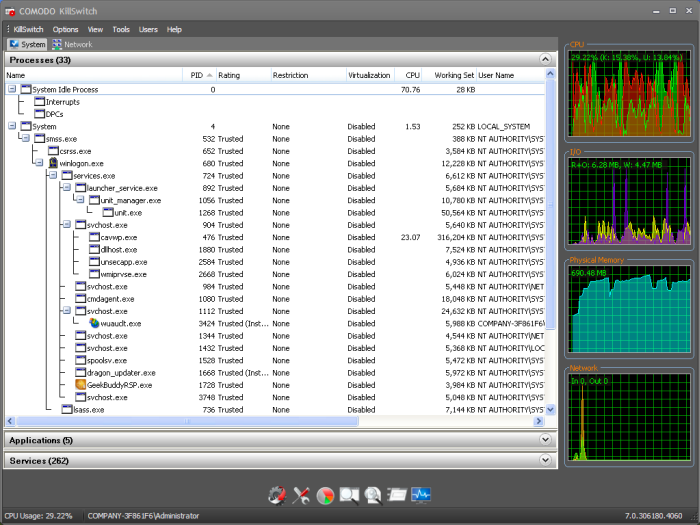View Active Internet Connections
The 'View Connections' interface displays an at-a-glance summary of all currently active Internet connections on a per-application basis. You can view all the applications that are connected; all the individual connections that each application is responsible for; the direction of the traffic; the source IP and port and the destination IP and port. You can also see the total amount of traffic that has passed in and out of your system over each connection.
This list is updated in real time whenever an application creates a new connection or drops an existing connection. The 'View Connections' is an extremely useful aid when testing firewall configuration; troubleshooting new firewall policies and rules; monitoring the connection activity of individual applications and your system as a whole and for terminating any unwanted connections.
The 'View active Connections' interface can be accessed by clicking 'View Connections' from the 'General Tasks' interface. Alternatively, this screen can be accessed by clicking the number above Inbound or Outbound in the Advanced View of the Home screen in the Firewall pane.

The 'View Connections' interface displays list of all the currently active Internet connections by initiated by various applications as a Tree structure.
Column Descriptions
-
Protocol - Shows the application that is making the connection, the protocol it is using and the direction of the traffic. Each application may have more than one connection at any time. Clicking + at the left of the application name expands the list of connections made by it.
-
Source (IP : Port) - The source IP Address and source port that the application is connecting through. If the application is waiting for communication and the port is open, it is described as ‘Listening’.
-
Destination (IP : Port) - The destination IP Address and destination port address that the application is connecting to. This is blank if the 'Source' column is 'Listening'.
-
Bytes In - Represents the total bytes of incoming data since this connection was first allowed.
-
Bytes Out - Represents the total bytes of outgoing data since this connection was first allowed.
Context Sensitive Menu
-
Right click on an item in the list to see the context sensitive menu.

-
If you wish to view the full path of the application, right click on the application name and select 'Show Full Path'.
-
If you wish to terminate a connection belonging to an application, right click on the specific connection and click 'Terminate Connection'.
- If you wish to open the folder containing the executable file of the application, click 'Jump to Folder'.
Identify and Kill Unsafe Network Connections
Comodo KillSwitch can show ALL running processes in granular detail– exposing even those that were invisible or very deeply hidden. You can simultaneously shut down every unsafe process with a single click and can even trace the process back to the parent malware.
Comodo KillSwitch can be directly accessed from the 'View Connections' by clicking the 'More' button.

If Comodo KillSwitch is already installed in your computer, clicking 'More' will open the application. If not, CIS will download and install Comodo Killswitch. Once installed, clicking this button in future will open the Killswitch interface.

- Read the license agreement by clicking 'View License Agreement' and click 'Agree and Install'. CIS will download and install the application.

On completion of installation, the Comodo KillSwitch main interface will be opened. Clicking the Network tab will display the the Network Connections and Network Utilization panes.

-
Details on how to use KillSwitch to view granular details on current network connections and terminate unsafe connections can be found at http://help.comodo.com/topic-119-1-328-3577-Viewing-and-Handling-Network-Connections-and-Usage.html.
-
The complete user guide for Comodo KillSwitch is available at http://help.comodo.com/topic-119-1-328-3518-Introduction-to-KillSwitch.html



